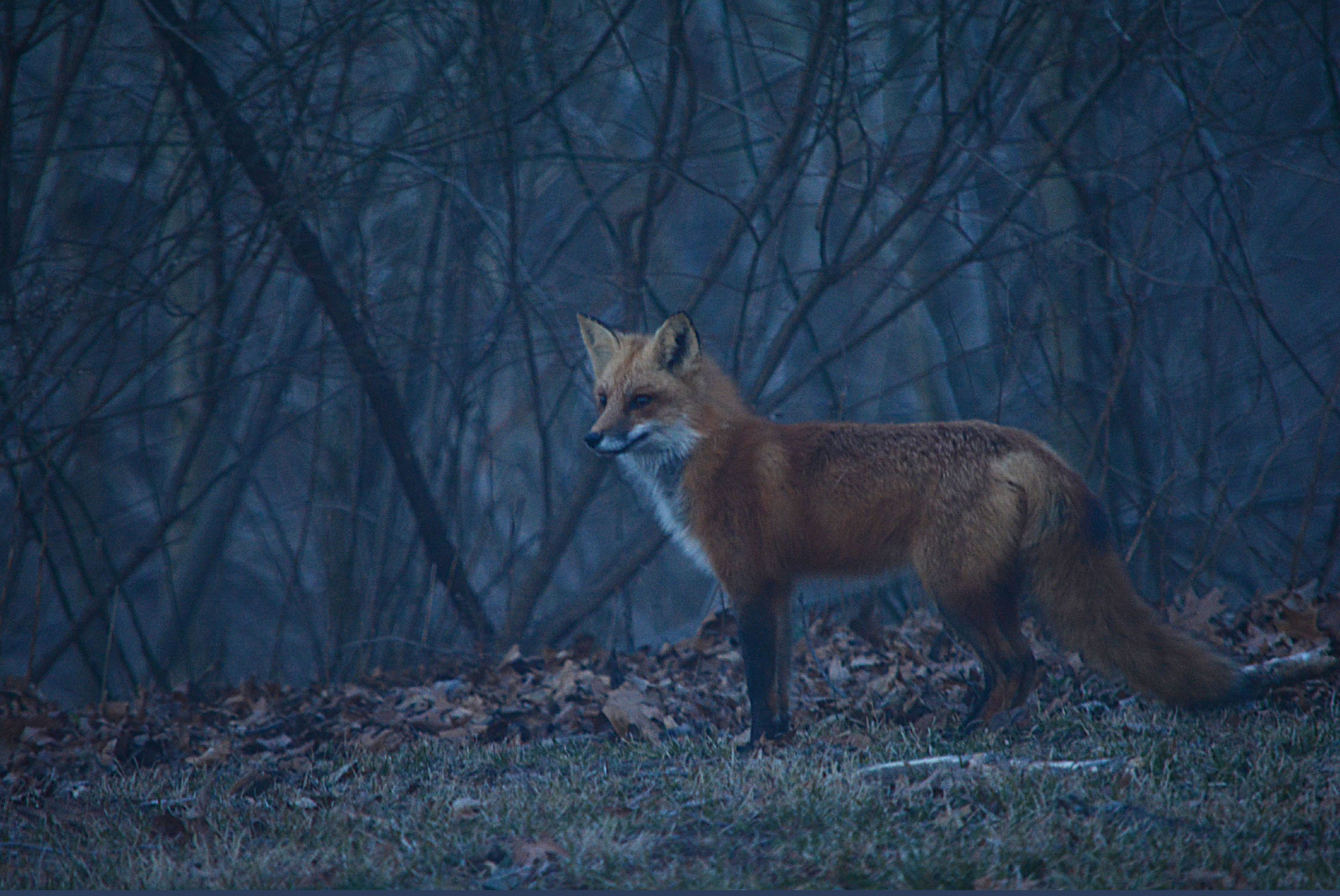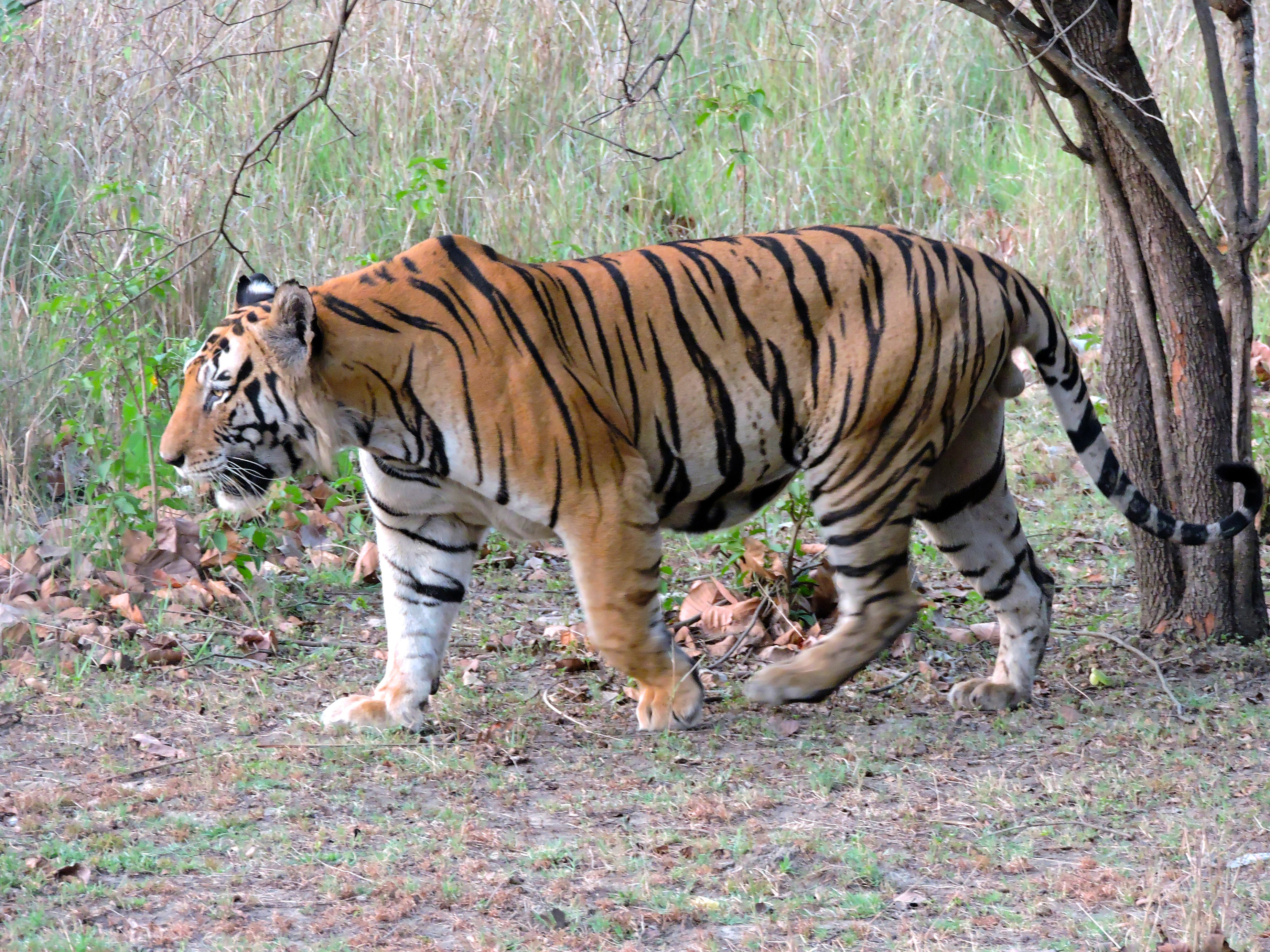|
Nocturnality
Nocturnality is a behavior in some non-human animals characterized by being active during the night and sleeping during the day. The common adjective is "nocturnal", versus diurnal meaning the opposite. Nocturnal creatures generally have highly developed senses of hearing, smell, and specially adapted eyesight. Some animals, such as ferrets, have eyes that can adapt to both low-level and bright day levels of illumination (see metaturnal). Others, such as bushbabies and (some) bats, can function only at night. Many nocturnal creatures including tarsiers and some owls have large eyes in comparison with their body size to compensate for the lower light levels at night. More specifically, they have been found to have a larger cornea relative to their eye size than diurnal creatures to increase their : in the low-light conditions. Nocturnality helps wasps, such as ''Apoica flavissima'', avoid hunting in intense sunlight. Diurnal animals, including humans (except for ni ... [...More Info...] [...Related Items...] OR: [Wikipedia] [Google] [Baidu] |
Metaturnal
Cathemerality, sometimes called metaturnality, is an organismal activity pattern of irregular intervals during the day or night in which food is acquired, socializing with other organisms occurs, and any other activities necessary for livelihood are undertaken. This activity differs from the generally monophasic pattern (sleeping once per day) of nocturnal and diurnal species as it is polyphasic (sleeping 4-6 times per day) and is approximately evenly distributed throughout the 24-hour cycle. Many animals do not fit the traditional definitions of being strictly nocturnal, diurnal, or crepuscular, often driven by factors that include the availability of food, predation pressure, and variable ambient temperature. Although cathemerality is not as widely observed in individual species as diurnality or nocturnality, this activity pattern is seen across the mammal taxa, such as in lions, coyotes, and lemurs. Cathemeral behaviour can also vary on a seasonal basis over an annual pe ... [...More Info...] [...Related Items...] OR: [Wikipedia] [Google] [Baidu] |
Diurnality
Diurnality is a form of plant and ethology, animal behavior characterized by activity during daytime, with a period of sleeping or other inactivity at night. The common adjective used for daytime activity is "diurnal". The timing of activity by an animal depends on a variety of environmental factors such as the temperature, the ability to gather food by sight, the risk of predation, and the time of year. Diurnality is a cycle of activity within a 24-hour period; cyclic activities called circadian rhythms are endogenous cycles not dependent on external cues or environmental factors except for a zeitgeber. Animals active during twilight are crepuscular, those active during the night are nocturnal and animals active at sporadic times during both night and day are cathemerality, cathemeral. Plants that open their flowers during the daytime are described as diurnal, while those that bloom during nighttime are nocturnal. The timing of flower opening is often related to the time at whic ... [...More Info...] [...Related Items...] OR: [Wikipedia] [Google] [Baidu] |
Cathemeral
Cathemerality, sometimes called metaturnality, is an organismal activity pattern of irregular intervals during the day or night in which food is acquired, socializing with other organisms occurs, and any other activities necessary for livelihood are undertaken. This activity differs from the generally monophasic pattern (sleeping once per day) of nocturnal and diurnal species as it is polyphasic (sleeping 4-6 times per day) and is approximately evenly distributed throughout the 24-hour cycle. Many animals do not fit the traditional definitions of being strictly nocturnal, diurnal, or crepuscular, often driven by factors that include the availability of food, predation pressure, and variable ambient temperature. Although cathemerality is not as widely observed in individual species as diurnality or nocturnality, this activity pattern is seen across the mammal taxa, such as in lions, coyotes, and lemurs. Cathemeral behaviour can also vary on a seasonal basis over an annual pe ... [...More Info...] [...Related Items...] OR: [Wikipedia] [Google] [Baidu] |
Rabbit
Rabbits are small mammals in the family Leporidae (which also includes the hares), which is in the order Lagomorpha (which also includes pikas). They are familiar throughout the world as a small herbivore, a prey animal, a domesticated form of livestock, and a pet, having a widespread effect on ecologies and cultures. The most widespread rabbit genera are '' Oryctolagus'' and '' Sylvilagus''. The former, ''Oryctolagus'', includes the European rabbit, ''Oryctolagus cuniculus'', which is the ancestor of the hundreds of breeds of domestic rabbit and has been introduced on every continent except Antarctica. The latter, ''Sylvilagus'', includes over 13 wild rabbit species, among them the cottontails and tapetis. Wild rabbits not included in ''Oryctolagus'' and ''Sylvilagus'' include several species of limited distribution, including the pygmy rabbit, volcano rabbit, and Sumatran striped rabbit. Rabbits are a paraphyletic grouping, and do not constitute a clade, as ha ... [...More Info...] [...Related Items...] OR: [Wikipedia] [Google] [Baidu] |
Crepuscular
In zoology, a crepuscular animal is one that is active primarily during the twilight period, being matutinal (active during dawn), vespertine (biology), vespertine/vespertinal (active during dusk), or both. This is distinguished from diurnality, diurnal and nocturnality, nocturnal behavior, where an animal is active during the hours of daytime and of night, respectively. Some crepuscular animals may also be active by moonlight or during an overcast day. Matutinal animals are active only after dawn, and vespertine (biology), vespertine only before dusk. A number of factors affect the time of day an animal is active. Predation, Predators hunt when their prey is available, and prey try to avoid the times when their principal predators are at large. The temperature may be too high at midday or too low at night. Some creatures may adjust their activities depending on local competition. Etymology and usage The word ''crepuscular'' derives from the Latin ''wiktionary:crepusculum, cre ... [...More Info...] [...Related Items...] OR: [Wikipedia] [Google] [Baidu] |
Squirrel
Squirrels are members of the family Sciuridae (), a family that includes small or medium-sized rodents. The squirrel family includes tree squirrels, ground squirrels (including chipmunks and prairie dogs, among others), and flying squirrels. Squirrels are indigenous to the Americas, Eurasia, and Africa, and were introduced by humans to Australia. The earliest known fossilized squirrels date from the Eocene epoch, and among other living rodent families, the squirrels are most closely related to the mountain beaver and dormice. Etymology The word ''squirrel'', first attested in 1327, comes from the Anglo-Norman which is from the Old French , the reflex of a Latin language">Latin word , which was taken from the Ancient Greek word (; from ) 'shadow-tailed', referring to the long bushy tail which many of its members have. ''Sciurus'' is also the name of one of its genuses. The native Old English language, Old English word for the squirrel, , only survived into Middle Eng ... [...More Info...] [...Related Items...] OR: [Wikipedia] [Google] [Baidu] |
Ethology
Ethology is a branch of zoology that studies the behavior, behaviour of non-human animals. It has its scientific roots in the work of Charles Darwin and of American and German ornithology, ornithologists of the late 19th and early 20th century, including Charles Otis Whitman, Charles O. Whitman, Oskar Heinroth, and Wallace Craig. The modern discipline of ethology is generally considered to have begun during the 1930s with the work of the Dutch biologist Nikolaas Tinbergen and the Austrian biologists Konrad Lorenz and Karl von Frisch, the three winners of the 1973 Nobel Prize in Physiology or Medicine. Ethology combines laboratory and field science, with a strong relation to neuroanatomy, ecology, and evolutionary biology. Etymology The modern term ''ethology'' derives from the Greek language: wikt:ἦθος, ἦθος, ''ethos'' meaning "character" and , ''wikt:-logia, -logia'' meaning "the study of". The term was first popularized by the American entomologist William Mo ... [...More Info...] [...Related Items...] OR: [Wikipedia] [Google] [Baidu] |
Tarsier
Tarsiers ( ) are haplorhine primates of the family Tarsiidae, which is the lone extant family within the infraorder Tarsiiformes. Although the group was prehistorically more globally widespread, all of the existing species are restricted to Maritime Southeast Asia, predominantly in Brunei, Indonesia, Malaysia and the Philippines.They are found primarily in forested habitats, especially forests that have liana, since the vine gives tarsiers vertical support when climbing trees. Evolutionary history Fossil record Fossils of tarsiiform primates have been found in Asia, Europe, and North America (with disputed fossils from Northern Africa), but extant tarsiers are restricted to several Southeast Asian islands. The fossil record indicates that their dentition has not changed much, except in size, over the past 45 million years. Within the family Tarsiidae, there are two extinct genera—''Xanthorhysis'' and '' Afrotarsius''; however, the placement of ''Afrotarsius'' is not certai ... [...More Info...] [...Related Items...] OR: [Wikipedia] [Google] [Baidu] |
Bushbaby
Galagos , also known as bush babies or ''nagapies'' (meaning "night monkeys" in Afrikaans), are small Nocturnality, nocturnal primates native to continental, sub-Sahara Africa, and make up the family (biology), family Galagidae (also sometimes called Galagonidae). They are considered a sister group of the Lorisidae. According to some accounts, the name "bush baby" comes from either the animal's cries or its appearance. The Ghanaian name ''aposor'' is given to them because of their firm grip on branches. In both variety and abundance, the bush babies are the most successful strepsirrhine primates in Africa, according to the African Wildlife Foundation. Taxonomic classification and phylogeny Galagos are currently grouped into six genera. ''Euoticus'' is a basal (phylogenetics), basal sister taxon to all the other galagids. The 'dwarf' galagids recently grouped under the genus ''Galagoides'' have been found, based on genetic data, and supported by analysis of vocalisations ... [...More Info...] [...Related Items...] OR: [Wikipedia] [Google] [Baidu] |
Tiger
The tiger (''Panthera tigris'') is a large Felidae, cat and a member of the genus ''Panthera'' native to Asia. It has a powerful, muscular body with a large head and paws, a long tail and orange fur with black, mostly vertical stripes. It is traditionally classified into nine Holocene, recent subspecies, though some recognise only two subspecies, mainland Asian tigers and the island tigers of the Sunda Islands. Throughout the tiger's range, it inhabits mainly forests, from coniferous and temperate broadleaf and mixed forests in the Russian Far East and Northeast China to tropical and subtropical moist broadleaf forests on the Indian subcontinent and Southeast Asia. The tiger is an apex predator and preys mainly on ungulates, which it takes by ambush. It lives a mostly solitary life and occupies home ranges, defending these from individuals of the same sex. The range of a male tiger overlaps with that of multiple females with whom he mates. Females give birth to usually two or ... [...More Info...] [...Related Items...] OR: [Wikipedia] [Google] [Baidu] |
Lion
The lion (''Panthera leo'') is a large Felidae, cat of the genus ''Panthera'', native to Sub-Saharan Africa and India. It has a muscular, broad-chested body (biology), body; a short, rounded head; round ears; and a dark, hairy tuft at the tip of its tail. It is sexually dimorphic; adult male lions are larger than females and have a prominent mane. It is a social species, forming groups called prides. A lion's pride consists of a few adult males, related females, and cubs. Groups of female lions usually hunt together, preying mostly on medium-sized and large ungulates. The lion is an apex predator, apex and keystone predator. The lion inhabits grasslands, savannahs, and shrublands. It is usually more diurnality, diurnal than other wild cats, but when persecuted, it adapts to being active nocturnality, at night and crepuscular, at twilight. During the Neolithic period, the lion ranged throughout Africa and Eurasia, from Southeast Europe to India, but it has been reduced to fr ... [...More Info...] [...Related Items...] OR: [Wikipedia] [Google] [Baidu] |








